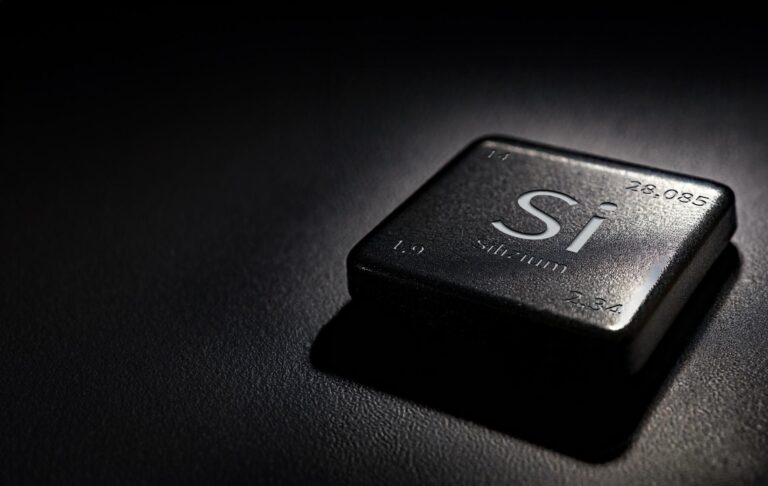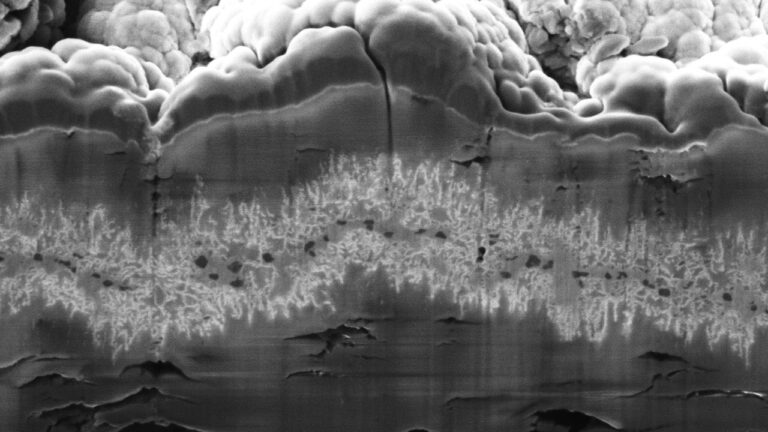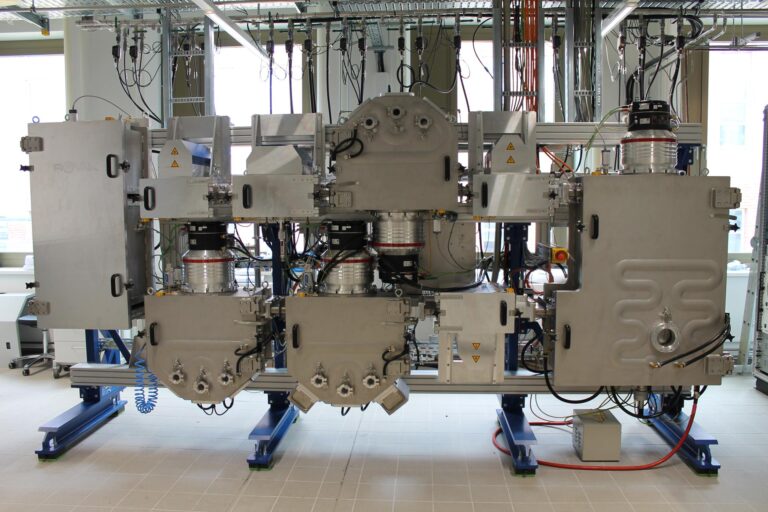Silicon anode technology
for a wide range of applications
Our patented anode platform technology brings 100% silicon anodes into existing cell production and future generations of batteries
Cost-effective
Low material costs combined with scalable high-rate deposition lower our anode production costs below those of comparable graphite anodes. Our anode is produced using an industrially established roll-to-roll process.
High-performance
Silicon has a capacity 10 times higher than graphite. The special structure of the NorcSi anode allows this characteristic to be utilized for a massive increase in energy density while providing a particularly high charging rate.
Cyclic stability
Our special manufacturing process compensates the strong volumetric variation that silicon usually undergoes during charging. This creates a unique structure that guarantees the mechanical stability of the anode – even after several hundred charging cycles.
Variably applicable
As a platform technology, the NorcSi process is suitable for all common cell types today as well as future generations such as solid-state batteries and offers a high degree of scalability.
Our technology
A unique process is the key to our success
Our patented production process differs from all known approaches to produce silicon anodes: There is no complex nano structure required to manufacture the NorcSi anode. This enables us to produce high-performance anodes simply from copper and silicon on an industrial scale – according to the “First Principle”: the most cost-effective method. The heart of our technology platform is a thermal process from the semiconductor industry. This method allows us to create stable nano structures within a thin layer of pure silicon. As a result, the familiar problems associated with the use of pure silicon, such as volume expansion, contact loss and the solid-electrolyte interface, are solved. Our anode achieves breakthroughs in capacity and charge rate in thorough tests. Furthermore, it offers high customization potential for almost all current battery applications and future cell types.
Production and application
Our process is prepared for the mass market
Our production process is a novelty within the battery production sector yet well-established in the semiconductor industry. By applying silicon as a layer, our anodes can be produced and processed in a roll-to-roll process using standard systems and equipment. As a product-independent platform technology, our process offers numerous parameters for customization and is suitable for lithium-ion batteries, lithium-sulfur batteries and fulfils all requirements for high-performance anodes in solid-state batteries. The high energy density and charging rate are the key features that make our silicon anodes ideal for applications such as electric cars, portable electric devices, drones and multicopters.
Why silicon?
Silicon – the better choice for lithium-ion batteries
Due to their high energy density, lithium-ion batteries have been the predominantly used technology for battery-powered electric vehicles, laptops, smartphones, and many other mobile applications with high energy requirements since the 1990s. They exist in numerous variants and designs.
One critical component of the battery is the anode, as the lithium ions are stored in it during charging. The storage capacity of the battery crucially depends on the properties of the anode. Today, graphite is primarily used for anodes. However, silicon can store up to 10 times more lithium ions due to its atomic structure. It is also available worldwide and is more cost-effective than graphite, which is mainly mined in two countries to date. Nevertheless, there has not yet been any success in replacing graphite with silicon on a large scale: Silicon significantly expands and contracts during the charging process, which considerably reduces the lifespan of the battery. Numerous attempts have already been made to solve this problem using complex carbon-based silicon nanowire structures or a mixture of silicon and graphite. With our patented process, we can produce pure silicon nanostructures on an industrial scale for the first time and thus substantially reduce the costs of high-performance silicon anodes.
Why silicon?
Silicon – the better choice for lithium-ion batteries

Due to their high energy density, lithium-ion batteries have been the predominantly used technology for battery-powered electric vehicles, laptops, smartphones, and many other mobile applications with high energy requirements since the 1990s. They exist in numerous variants and designs.
One critical component of the battery is the anode, as the lithium ions are stored in it during charging. The storage capacity of the battery crucially depends on the properties of the anode. Today, graphite is primarily used for anodes. However, silicon can store up to 10 times more lithium ions due to its atomic structure. It is also available worldwide and is more cost-effective than graphite, which is mainly mined in two countries to date. Nevertheless, there has not yet been any success in replacing graphite with silicon on a large scale: Silicon significantly expands and contracts during the charging process, which considerably reduces the lifespan of the battery. Numerous attempts have already been made to solve this problem using complex carbon-based silicon nanowire structures or a mixture of silicon and graphite. With our patented process, we can produce pure silicon nanostructures on an industrial scale for the first time and thus substantially reduce the costs of high-performance silicon anodes.
About us
The unique synergy underlying NorcSi
Silicon is the most intensively researched material in the semiconductor sector. The idea for our technology stems from an interdisciplinary research project launched in 2013 by the Helmholtz-Zentrum Dresden Rossendorf (HZDR) and the Technical University of Freiberg (TU Freiberg). Our founders and managing directors have decades of experience in special machine construction for the photovoltaic and high-tech sector and founded NorcSi 2020 with the aim of putting the scientific findings of materials research into application. Thanks to our location on the Weinberg Campus in Halle (Saale), we have access to an excellent network of scientific and industrial partners.







